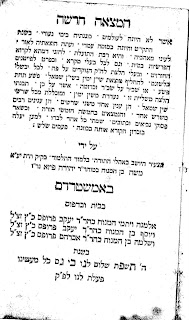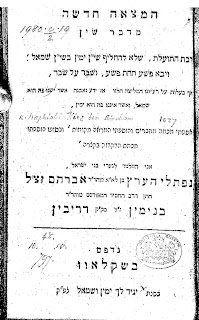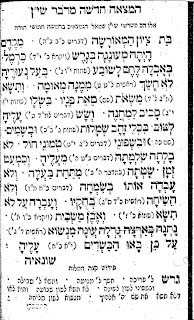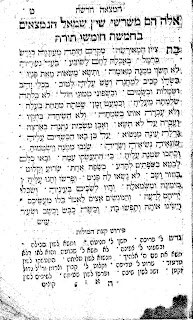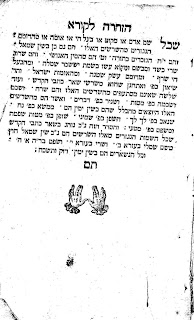A Puzzling Example of Plagiarism
One of the strange facts connected with plagiarism is that, at times, it is hard to discern what the motivation is to plagiarize. For example, we have seen a person today that continuously plagiarizes entire books even though he is well-known and, if the approbations on his books are any indication, well-respected. Still, he has plagiarized, in their entirety at least three books and seems to continue to do so. While monetary gain may be a reason, I don’t see this as making him rich.
The book in question is a small work, Ha-Matzah Hadasha, published in Amsterdam as part of a collection of works. The entire collection, that includes three other works, is Shir Emunim. The author of these works is R. Moshe Piza. Ha-Matzah Hadasha is a book whose purpose is to demonstrate and list the words that contain the letter Shin and to distinguish between a Shin and a Sin. Additionally, R. Piza included a short commentary on the bottom that provides translation for some of the words he lists. Finally, R. Piza includes a poem of sorts at the end that lists the Sins in Tanach.
Now, the plagiarized version. For this we travel from Amsterdam to Vilna. Zinberg, (A History of Jewish Literature, New York, 1975, vol. 6, pp. 282-84) in discussing the early rumblings of the Haskalah movement points to an “interesting person” Naftali Hertz Shulman. Shulman was very well-read and may have been proficient in Russian, German and Latin, something very uncommon for Jews of the time. He gave classes in the Rambam’s Moreh Nevukim and was a teacher to many wealth students. Shulman attempted to start a journal that would provide information “about commerce and political events, and the lover of science about scientific discoveries.” The stated purpose of the journal was so that “much knowledge in the realm of various languages, mathematics, geography, the natural sciences, etc. will be disseminated among our people.”
Now, in 1804, Shulman published R. Benyamin Mussafia’s lexographic work, Zekher Rav. Additionally, in 1804, under his own name, Shulman published Ha-Matzah Hadasha. On the title page Shulman states that “he gathered the information [in Ha-Matzah Hadasha] from many places” but never says that the entire work is word for word from R. Piza’s earlier work. Zinberg, in his three pages on Shulman – most of glowing with Shulman’s accomplishments – never mentions this fact. This is so, although the fact that Shulman plagiarism was already noted by Roest in his catalog of the Rosenthal collection, Yodeh Sefer no. 520. Roest notes that Shulman plagiarized Piza’s entire work. It is worth noting that in truth Shulman did not plagiarize R. Piza’s entire work – Shulman left out the final poem (I have provided it below).
Even auction catalogers, whose job presumably is to increase the value of auction items, were unaware of this fact. In the Judiaca Jerusalem catalog (April, 2008) they had Shulman’s work for sale. They merely note that Shulman probably wrote this work – a work to differentiate between a the two similar letters of Shin and Sin – due to the unique Lithuanian pronunciation. Not only do that not mention the work is not original to Shulman, their explanation fails to account for the fact the work was never written in response to Lithuanian pronunciation as it was originally written in Amsterdam by a Sefardic author, R. Piza.
Now, in light of Zinberg’s description of Shulman, Shulman appears to have been well respected in Vilna, as I mentioned he taught many wealthy children, Shulman published his own works and was involved with many members of the early Haskalah even going so far as to suggest publishing the journal mentioned above. It is therefore perplexing then he would plagiarize an eight page book that for the most part is merely a list of words from Tanach that merely highlights whether there is a Shin or a Sin. Below, are scans from the original and Shulman’s edition.
Note
Additionally, it may be that he actually plagiarized another book as well. While this is highly speculative, another book, discussed here, was plagiarized from R. Abraham ben HaGra in 1804 by a Yehuda ben Naftali Hertz. I don’t know if this Yehuda ben Naftali Hertz is related to the Naftali Hertz above but the similarity in name, place of publication, as well as the timing may be an indication that either it is the same person or somehow connected.
